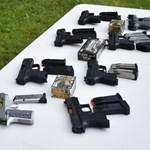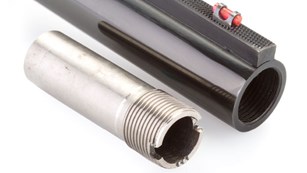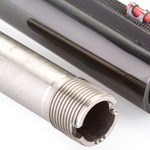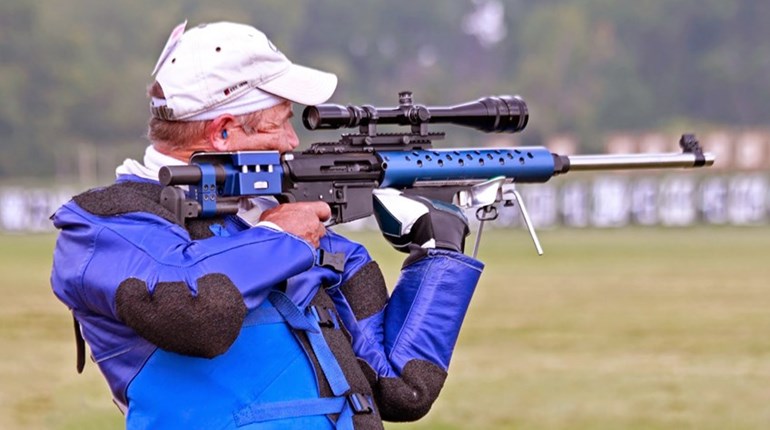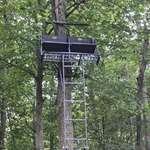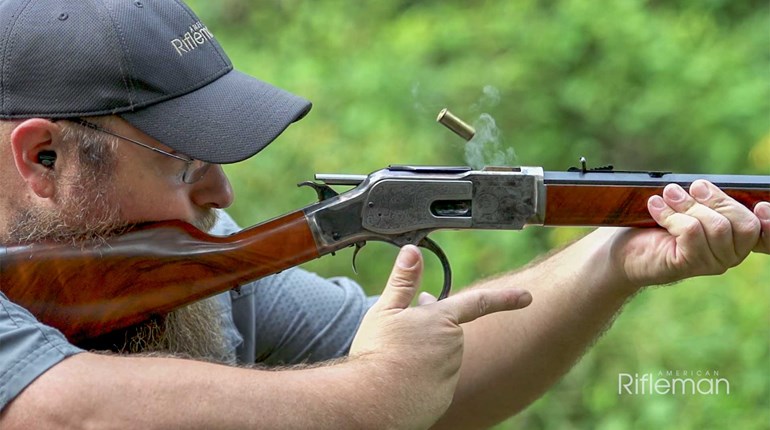
Properly inletting and then fitting the barreled action of a rifle to the stock is called bedding. The purpose of bedding is to securely hold the barreled action in the stock so that the vibrations and stresses produced as the bullet accelerates down the bore are transferred and controlled in a uniform pattern of movement. By so doing, inconsistencies in flex and vibration are held to a minimum, thus reducing bullet dispersion and increasing accuracy and consistency.
Ideally, when the stock screws are tightened, the stock should produce as little stress as possible on the barreled action—that is, it shouldn't cause the receiver to bend or the barrel to flex from pressure. Some stress or pressure is unavoidable; existing stress must remain consistent from shot to shot. This requires bedding that conforms exactly to the receiver surface.
Many wood and some synthetic stocks are inletted either by machine or by hand. Many synthetic stocks are molded with inletting to accept a specific barreled action. Hybrid and metal stocks must be machined and fitted tot he action. The quality of the bedding fit is determined by the precision of the inletting or molding process. With wood and synthetic stocks, fit is improved by applying bedding compound to the bedding area.
Bedding compound consists of fiberglass or powdered metal such as steel or aluminum in a thick liquid solution of epoxy or similar material. The bedding compound is spread onto the bedding surface, and the barreled action (which has been treated with release agent to prevent adhesion of the compound) is seated firmly into it. The bedding compound is then allowed to dry, forming a hard, moisture- and solvent-resistant layer that conforms precisely to the barreled action. This holds the action securely in the stock so that stresses on the receiver and barrel remain consistent.
There are many different bedding techniques. For example, bedding compound can be applied to the full length of the receiver or only at the receiver ring and receiver tang.
Pillar bedding is a popular option. In this technique, cylindrical steel or aluminum tubes are cut to a length so that they become pillars that control the fit of the action and magazine in the stock. When properly fitted, both the bottom metal and receiver are tensioned against the pillars and not the stock, giving secure metal-to-metal bedding contact.
Aluminum bedding blocks are another popular option, especially with heavy-barrel tactical rifles and varmint rifles. In this method, an aluminum bedding block is inletted and bedded or molded into the stock and the action, then bedded to the block. This provides a stable bedding solution that maintains accuracy and point of impact over a wide range of temperature and humidity conditions.


